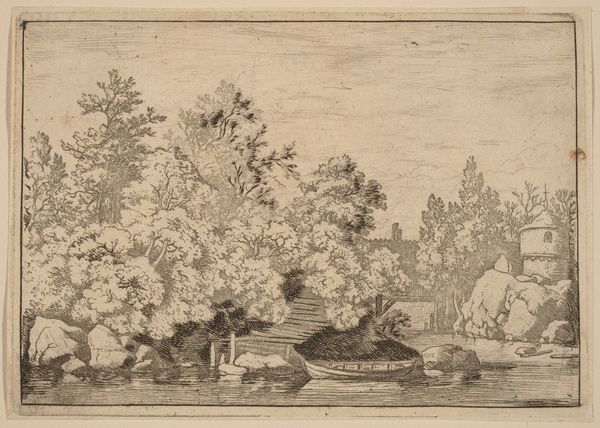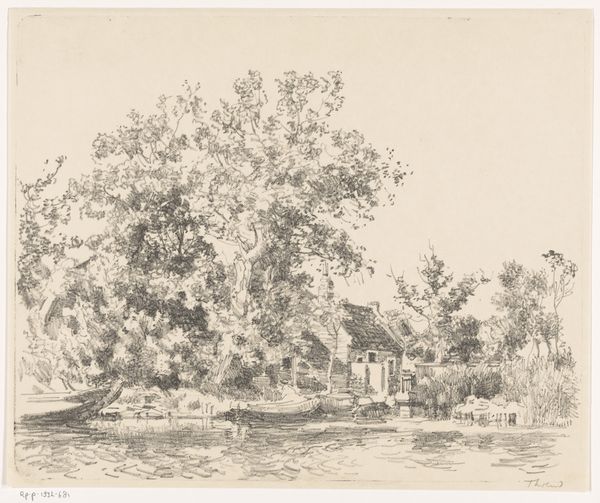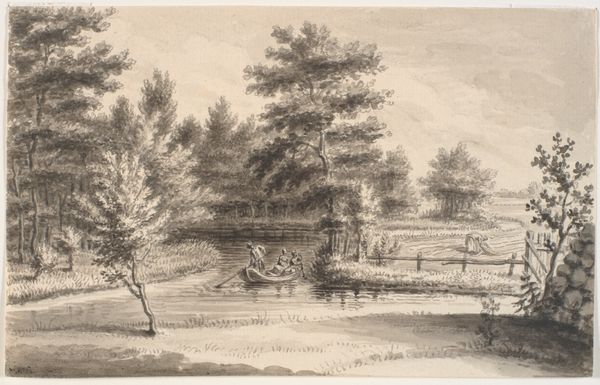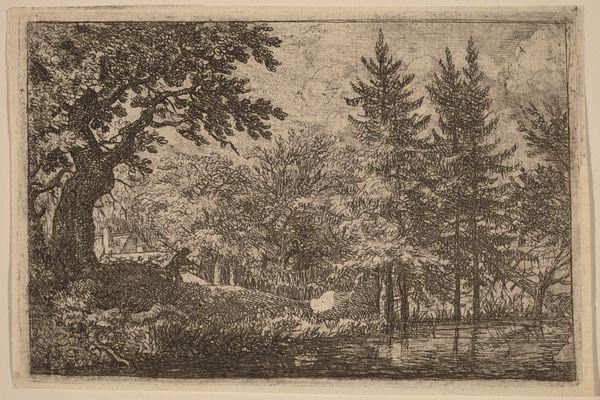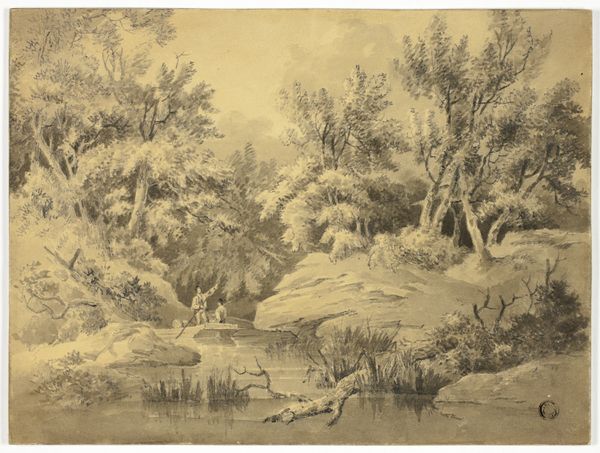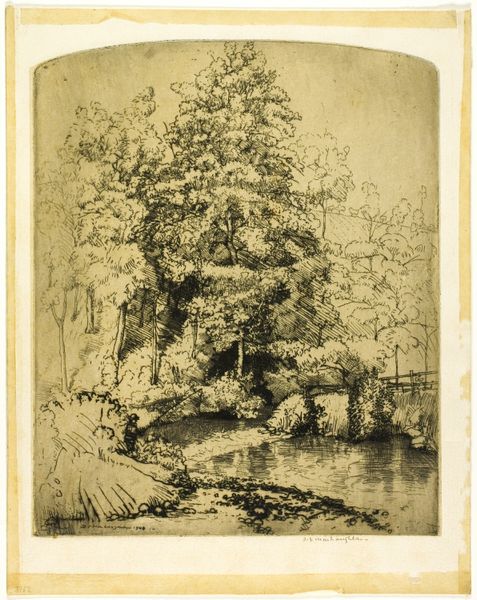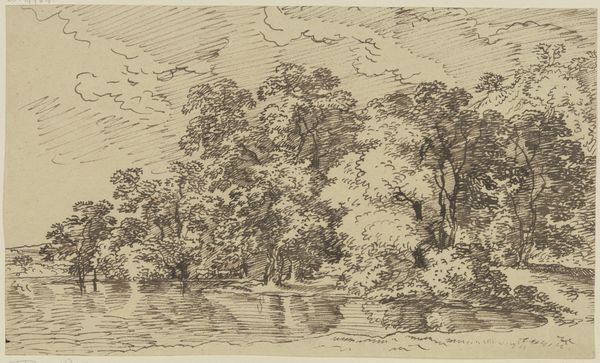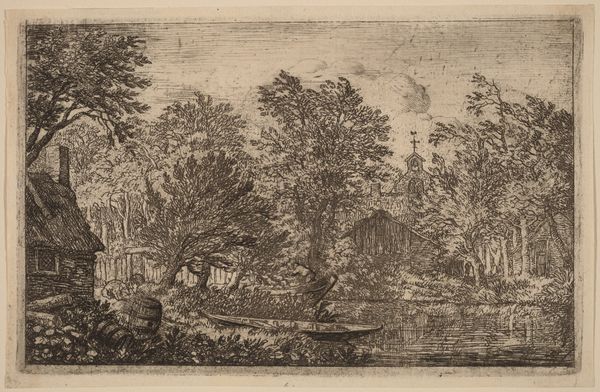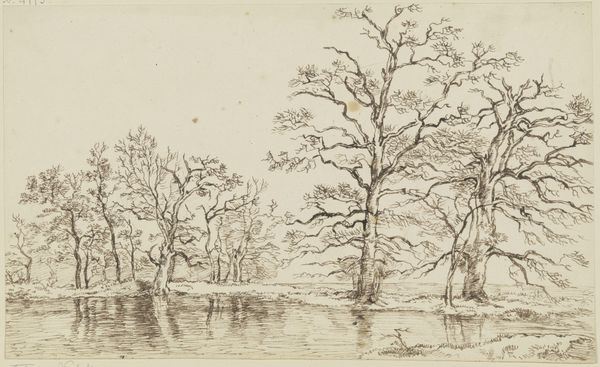
print, etching
#
baroque
#
dutch-golden-age
# print
#
etching
#
landscape
#
line
Copyright: National Gallery of Art: CC0 1.0
Editor: This etching, "The Cudgel Dam and Covered Bridge," created by Allart van Everdingen around the mid-17th century, offers a serene waterside scene. I find the composition quite interesting, especially the contrast between the densely etched trees and the relatively plain sky. What do you see in this piece? Curator: The power of this etching lies within the dynamism created by line itself. Note the artist's deployment of varied densities to produce the tonal range from shadow, and how the horizon line almost disappears allowing you to perceive the atmospheric depth in an otherwise flattened perspective. The balance between open space and carefully worked areas of shadow creates the affect you observe. Are you drawn to this tension as well? Editor: Absolutely. It’s interesting how such detailed foliage exists within such a restrained composition. Curator: The composition employs a tripartite approach using large clusters of foliage, contrasted to areas that feature open expanse in a way that leads to a structural harmony, even employing something like staccato marks as formal signifiers throughout the piece. What sort of feeling does it leave you with? Editor: It's like a harmony born of opposites, calm and restless at the same time! The line work suggests an almost frenetic energy. Curator: Precisely! This dynamic interplay elevates the landscape beyond a mere picturesque scene to a profound expression of form and materiality itself. It speaks volumes about the expressive power of etching as a medium, wouldn't you agree? Editor: I definitely see that now. I hadn’t considered how the formal qualities could communicate so much about both technique and emotion! Curator: It highlights how closely bound those elements are; they mutually constitute the artwork.
Comments
No comments
Be the first to comment and join the conversation on the ultimate creative platform.
